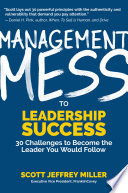

Self-awareness is a foundational element of effective leadership. The book emphasizes the importance of understanding one’s strengths, weaknesses, values, and motivations. Leaders who are self-aware can better navigate their emotions, make informed decisions, and understand how their behavior affects others. This idea encourages leaders to engage in introspection, seek feedback from peers, and be open to personal growth. By fostering self-awareness, leaders can build stronger relationships with their teams, create a culture of trust, and improve overall organizational performance.
Continue readingEmotional intelligence (EQ) is highlighted as a critical skill for leaders. The book outlines the components of EQ, including self-regulation, empathy, and social skills. Leaders with high EQ can manage their own emotions and understand the emotional states of their team members. This ability allows them to respond appropriately to situations, resolve conflicts effectively, and inspire their teams. The author provides practical strategies for developing emotional intelligence, such as active listening, practicing empathy, and being aware of non-verbal cues, which can significantly enhance a leader's effectiveness.
Continue readingAuthenticity in leadership is about being genuine and true to oneself. The book stresses that leaders should embrace their unique qualities and lead with integrity. Authentic leaders foster an environment where team members feel safe to express their thoughts and ideas. This idea encourages leaders to share their vulnerabilities and experiences, which can help build deeper connections with their teams. By being authentic, leaders can cultivate trust and loyalty, leading to a more engaged and motivated workforce.
Continue readingEffective communication is a cornerstone of successful leadership. The book discusses the importance of clear and open communication in fostering collaboration and understanding within teams. It offers practical tips for improving communication skills, such as being concise, actively listening, and adapting one’s communication style to suit different audiences. The author emphasizes that leaders should not only convey information but also encourage dialogue and feedback. By enhancing communication skills, leaders can ensure that their messages are understood and that their teams feel valued and heard.
Continue readingIn a rapidly changing business environment, adaptability is essential for leaders. The book highlights the need for leaders to be flexible and open to change. It discusses strategies for developing adaptability, such as embracing uncertainty, being willing to pivot when necessary, and fostering a culture of innovation within the team. Leaders who model adaptability can inspire their teams to be more resilient and responsive to challenges. This idea reinforces the importance of continuous learning and staying informed about industry trends and shifts.
Continue readingThe book emphasizes the role of mentorship and coaching in leadership development. It advocates for leaders to seek mentors who can provide guidance and support in their career journeys. Additionally, it encourages leaders to adopt a coaching mindset, helping their team members grow and develop their skills. By investing in mentorship and coaching, leaders can create a culture of learning and development, empowering their teams to reach their full potential. This idea underscores the importance of building relationships and fostering a supportive environment.
Continue readingHaving a clear vision and purpose is crucial for effective leadership. The book discusses how leaders should articulate a compelling vision that aligns with the organization’s values and goals. This vision serves as a guiding light for the team, helping to motivate and inspire them. The author emphasizes the importance of involving team members in the vision-setting process, ensuring that everyone feels a sense of ownership and commitment. By establishing a strong vision and purpose, leaders can drive engagement and performance within their organizations.
Continue reading